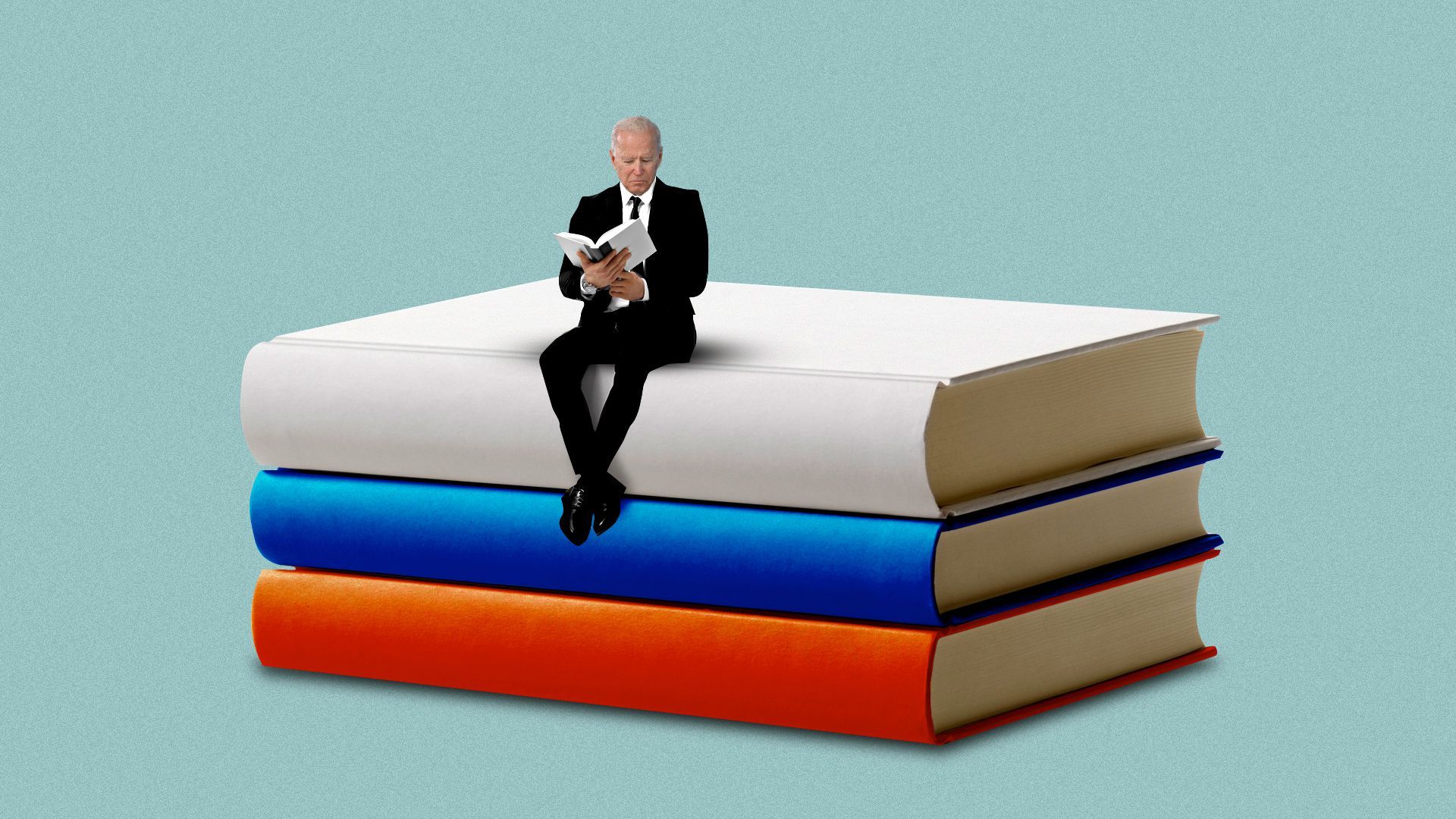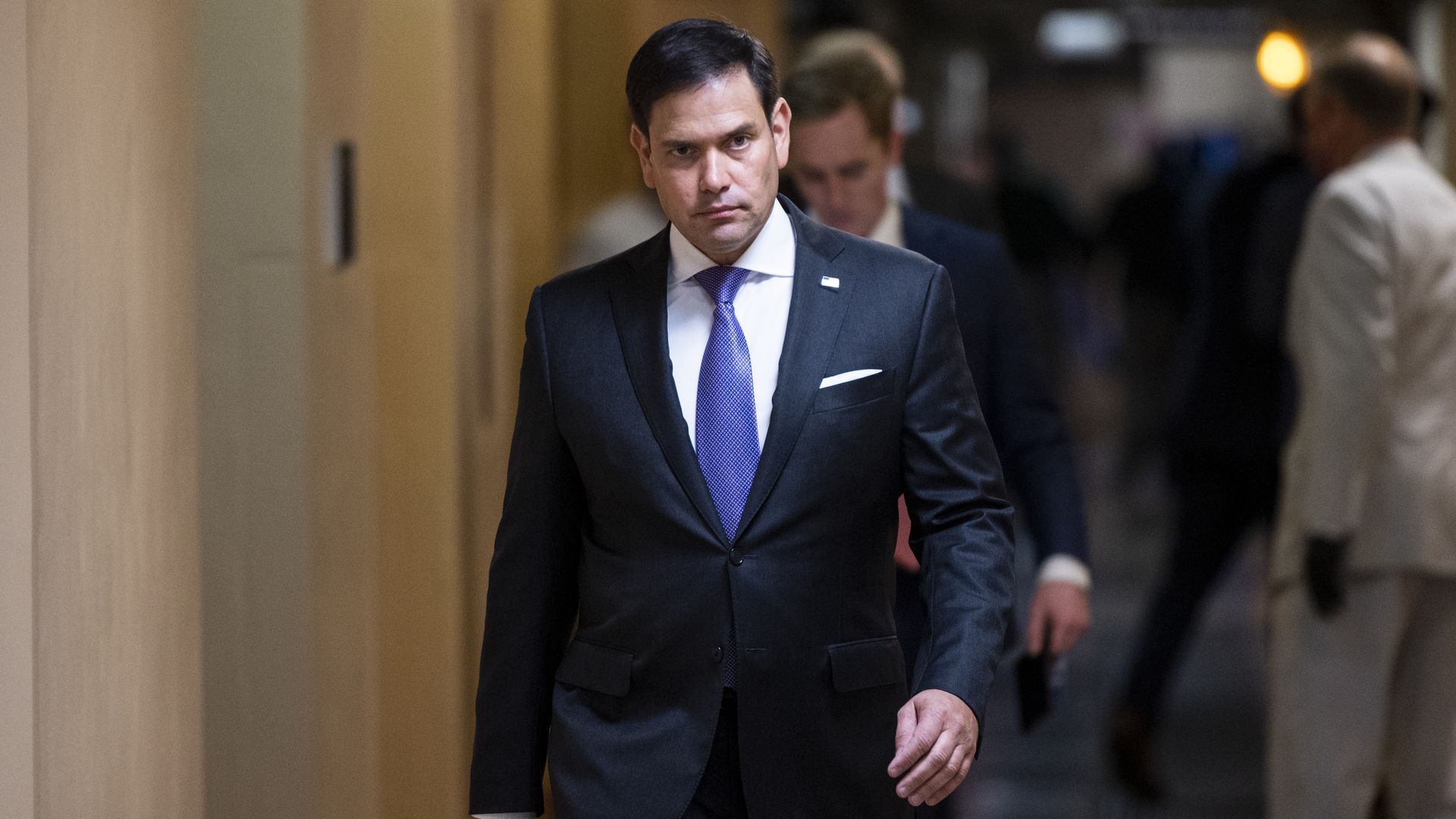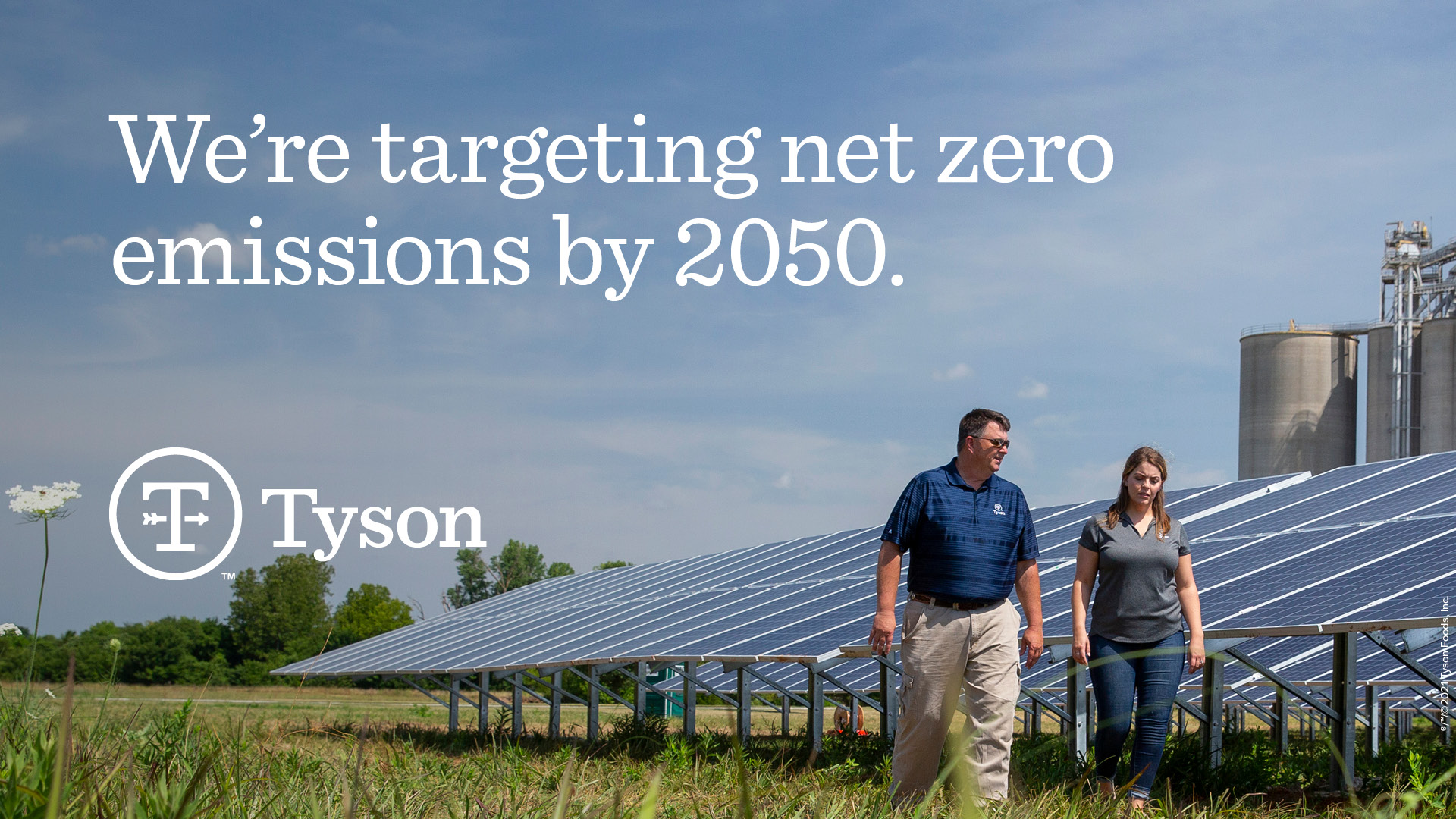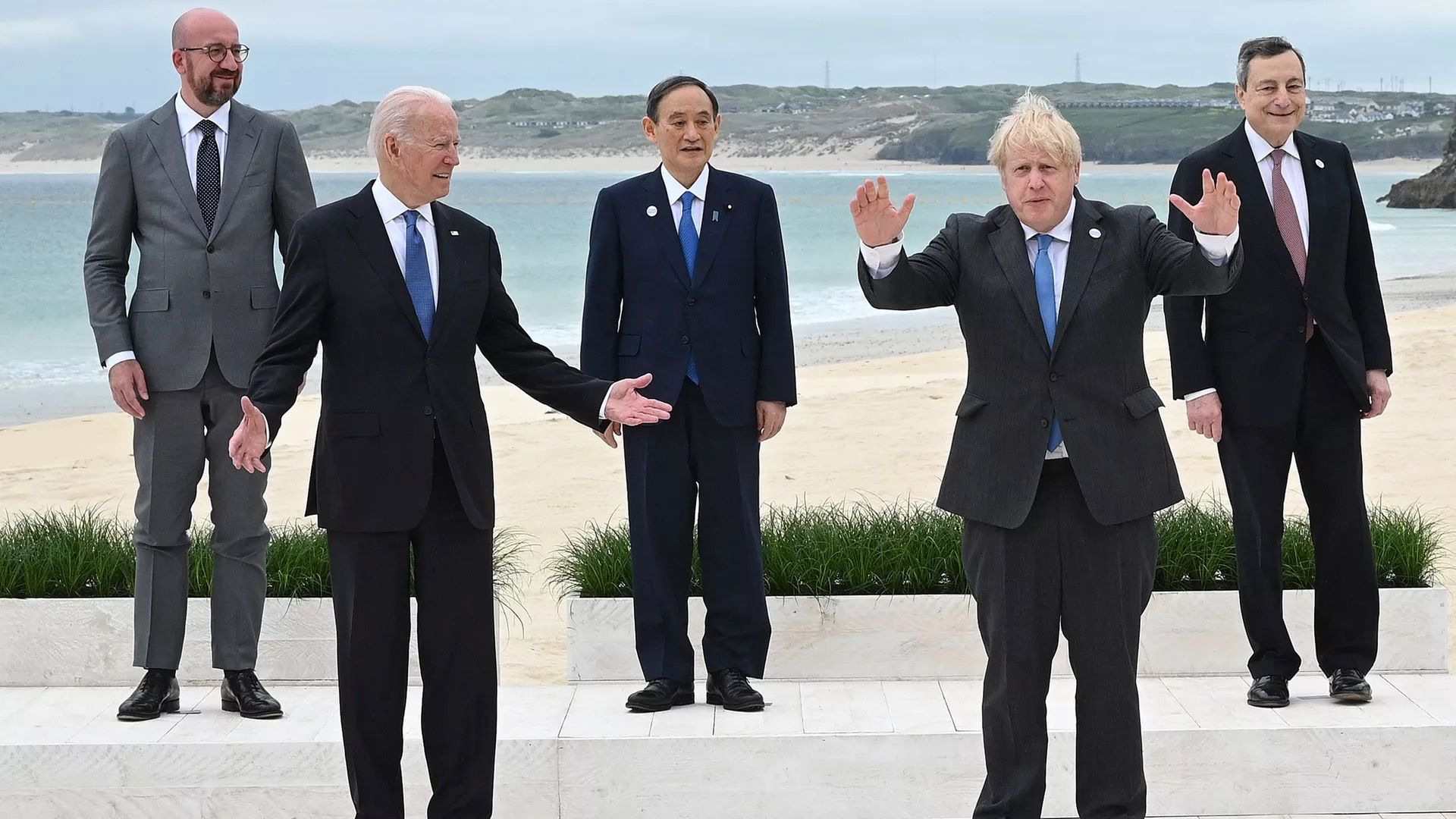| | | | | | | Presented By Tyson Foods | | | | Axios Sneak Peek | | By Alayna Treene and Hans Nichols ·Jun 14, 2021 | | 🇧🇪 Welcome back to Sneak. President Biden is straddling NATO and EU meetings with an overnight in Brussels. ⚡ Situational awareness: Senators' weekly lunches will resume at their pre-COVID locations tomorrow — Democrats will meet in the Mansfield Room while Republicans will meet in the LBJ Room at the Capitol, Axios' Alayna Treene reports. Smart Brevity™ count: 1,345 words ... 5 minutes. Edited by Glen Johnson. | | | | | | 1 big thing: Scoop — Inside Biden's Putin prep |  | | | Photo illustration: Aïda Amer/Axios. Photo: Leon Neal (WPA Pool)/Getty Images | | | | President Biden assembled a group of outside Russia experts — including former Trump officials — to brief him for his summit with President Putin, people familiar with the matter tell Axios' Hans Nichols. Why it matters: The previously unreported session demonstrates the extent to which Biden wants to be well prepared, drawing on the experience of officials with first-hand knowledge of the onetime KGB colonel's tactics and tricks. - The group urged Biden not to hold a joint press conference with Putin or afford him any opportunity to try to upstage the private talks with new public proposals.
- After his first formal summit with Putin, in Helsinki in 2018, President Trump questioned his own intelligence community's assessment of Russian interference in the 2016 election: "I have President Putin. He just said it's not Russia. I will say this: I don't see any reason why it would be."
- Among the group of Biden briefers was Fiona Hill, a former National Security Council official who once said she considered feigning a medical emergency to cut short that news conference with Putin.
In Brussels today, Biden previewed his approach for the meeting, scheduled for Wednesday in Geneva. - He said Putin is "bright, he's tough and I have found that he is a, as they say when we used to play ball, a worthy adversary."
- The president helped prepare by sitting down with his briefers — at least some of them virtually — before departing for the G7 summit.
Go deeper: During the briefing, the assembled experts broadly agreed on the approach Biden should adopt: blunt talk leaving no doubt for Putin on where Biden stands, from hacking to human rights. - There were roughly a dozen participants, including two of President Obama's former Russian ambassadors: Michael McFaul and John Tefft.
- Other participants included Hill, who not only was present for Trump's Helsinki meeting but later testified during his impeachment trial.
- Rose Gottemoeller, an arms control expert now at Stanford University who served as deputy secretary general of NATO under Obama, and Eric Green, a career foreign service officer who is the NSC's senior director for Russia, also participated.
Between the lines: Even though the group represented a range of views about how to handle Putin, there weren't outright disagreements on the approach. - Some participants favored looking for more opportunities to engage with Russia, from student exchanges to restoring diplomatic and consular positions.
- Others argued for an approach conveying a get-tough message at every opportunity.
Keep reading. Read a transcript of Biden's news conference today. |     | | | | | | 2. Rubio's play for anti-China vote |  | | | Sen. Marco Rubio. Photo: Bill Clark/CQ-Roll Call Inc. via Getty Images | | | | Sen. Marco Rubio (R-Fla.) is making a play for China hawks in Florida as he braces for a competitive re-election fight next year, records reviewed by Axios' Lachlan Markay show. Why it matters: Hostility toward communism drove a significant number of Latino voters in Florida into the Republican column in 2020. The Rubio campaign's focus on China can capitalize on that trend and a wider — and widening — American mistrust of Beijing. What's new: Rubio allies have spent the past year quietly building a list of voters motivated by anti-China sentiment. Now his campaign is openly hitting up their inboxes. - Rubio campaign emails with subject lines such as "Dems <3 China," and, "Is it time to stand up to Communist China?" have started going out to a list maintained by a nonprofit group called Stand Up to China.
- The group is run by Warren Tompkins, a South Carolina operative who headed Rubio's super PAC during his 2016 presidential bid.
How it works: Stand Up to China has spent nearly $600,000 on Facebook and Instagram ads since January 2020 to help build that list. As a 501(c)(4) nonprofit, it doesn't have to disclose the sources of its funding. - The ads hit China on various high-profile issues, such as the COVID-19 pandemic and Beijing's military buildup, before asking for email sign-ups.
- Initially, Stand Up to China's ads targeted Facebook and Instagram users in Florida. More recently, they've run in other states, including the presidential battleground states of Iowa, New Hampshire, South Carolina and Nevada.
- "SUTC does not presently engage in political activities," Tompkins told Axios. But the group "makes its list available at market rates to third parties in accordance with its mission statement through third-party vendors."
Between the lines: The Rubio campaign sent at least eight emails to that list during the first two weeks of June. - Most of the emails contained an anti-China message. Some linked to a campaign petition page titled, "Stand up to China!" All asked for contributions to Rubio's campaign or shows of support for the senator's anti-China efforts.
Keep reading. |     | | | | | | 3. By the numbers: The building immigration backlog |  Reproduced from TRAC, Syracuse University; Chart: Axios Visuals There are now more than 1.3 million cases awaiting a decision from an immigration judge — double the caseload from 2017 — to determine whether migrants can legally stay in the U.S., according to newly released data reviewed by Axios' Stef Kight. Why it matters: The rapidly growing backlog is another sign of a broken immigration system. Migrants have been waiting an average of nearly 950 days for a court decision — two-and-a-half years of living in limbo. - The long wait times can also be a lure for some people considering crossing the U.S.-Mexico border.
- While they wait to have their case heard, they likely will be allowed to wait and work in the U.S. before any potential deportation.
By the numbers: So far this fiscal year, immigration courts have taken on nearly two times as many cases as they completed, with 127,000 new cases, according to data from Syracuse University's Transactional Records Access Clearinghouse (TRAC), which analyzes millions of case records. - More than 290,000 Guatemalans are currently waiting in the immigration court backlog, as well as over a quarter-million Hondurans.
- Los Angeles County has the most residents with pending deportation cases at 70,560, TRAC assistant professor Austin Kocher noted. That's followed by Harris County, Texas; Queens County, New York; Miami-Dade County, Florida; and Dallas County, Texas.
- Just 21% of immigrants — including unaccompanied children — had legal representation when they were ordered deported, according to Kocher.
|     | | | | | | A message from Tyson Foods | | Tyson Foods targets net zero emissions by 2050 | | |  | | | | Tyson Foods aims to achieve net-zero emissions globally by 2050 – an expansion of the company's current science-based target of a 30% GHG emissions reduction by 2030. The company will focus on key areas across its global operations, energy sources and supply chain to achieve. Learn more. | | | | | | 4. Biden's billion-dose math doesn't compute |  | | | President Biden with other G7 leaders. Photo: Leon Neal/Pool/AFP via Getty | | | | Biden claimed at the conclusion of the G7 summit Sunday his plan to buy 500 million Pfizer doses to share with the world had "generated a commitment by the rest of our colleagues in the G7 that they would provide another half-billion." Why it matters: The numbers don't add up for the headline announcement from the summit — a billion-dose pledge that became a signal the U.S. return to the global table was producing results, Axios World author Dave Lawler writes as part of his newsletter. Breaking it down: In addition to the U.S. commitment, the U.K. promised to donate 100 million doses over the next year while Canada promised 13 million (plus another 87 million to be purchased later, using funds already contributed to COVAX). - France had already promised to donate 30 million doses by the end of the year, and President Emmanuel Macron doubled that to 60 million.
- That's a total of 143 million new doses pledged over the course of the summit by countries other than the U.S., a fraction of the 500 million Biden and others in the administration claimed were "generated" by the U.S. pledge.
The joint communique released at the end of the summit seems to incorporate some pre-existing pledges to wind up with a promise that G7 countries will "share at least 870 million doses directly over the next year." - The document also says the G7 members will be "providing for one billion doses over the next year," without offering further details.
Between the lines: There's a big difference between contributing money and doses. - The WHO-backed COVAX initiative has been short of doses, not because it lacks the money to buy them, but because it has been unable to sufficiently tap the global supply — much of which has flowed to rich countries like the G7 members.
- Biden's pledge involves some recycling: $2 billion of the $3.5 billion price tag will be covered by funds previously promised to the COVAX initiative, which would have otherwise been used to buy doses or fund their distribution.
What they're saying: The WHO has noted that the commitments fall well short of the 11 billion doses needed to end the pandemic, and aid groups and dignitaries leading the charge on vaccine sharing have lambasted them as far too modest. - Former U.K. Prime Minister Gordon Brown, for example, called the 1 billion figure an "unforgivable moral failure."
Keep reading. |     | | | | | | 5. Pic du jour |  | | | Photo: Alex Wong/Getty Images | | | | Grace Hudson, daughter of a communication officer on Air Force Two, salutes as Marine Two delivers Vice President Kamala Harris to Joint Base Andrews. |     | | | | | | A message from Tyson Foods | | Tyson Foods targets net zero emissions by 2050 | | |  | | | | Tyson Foods aims to achieve net-zero emissions globally by 2050 – an expansion of the company's current science-based target of a 30% GHG emissions reduction by 2030. The company will focus on key areas across its global operations, energy sources and supply chain to achieve. Learn more. | | | | 📬 Thanks for reading. A reminder you can sign up for email delivery of this or any of Axios' other free newsletters through this link. |  | | The tool and templates you need for more engaging team updates. | | | | | | Axios thanks our partners for supporting our newsletters. If you're interested in advertising, learn more here.
Sponsorship has no influence on editorial content. Axios, 3100 Clarendon Blvd, Suite 1300, Arlington VA 22201 | | | You received this email because you signed up for newsletters from Axios.
Change your preferences or unsubscribe here. | | | Was this email forwarded to you?
Sign up now to get Axios in your inbox. | | | | Follow Axios on social media:    | | | | | |










No comments:
Post a Comment